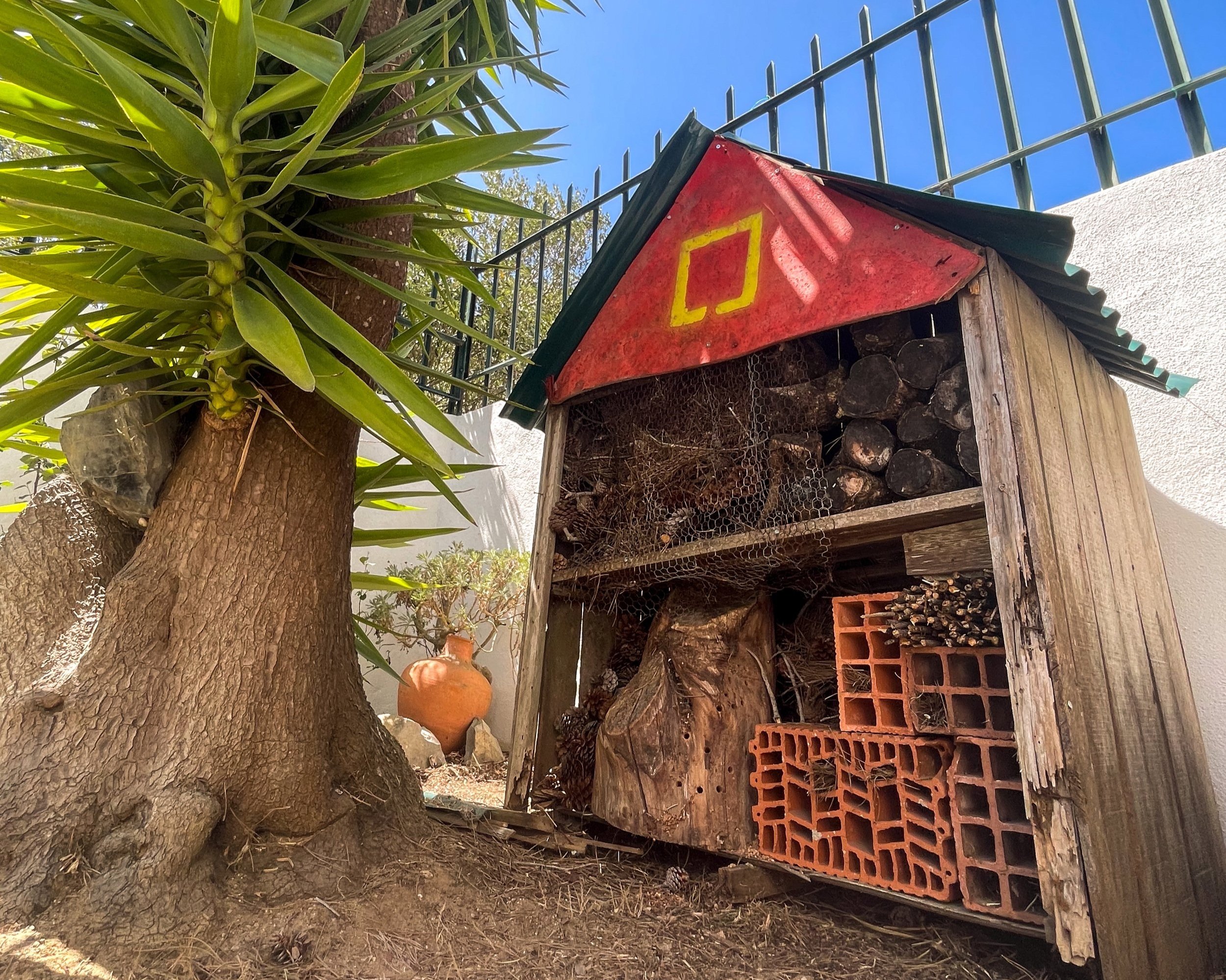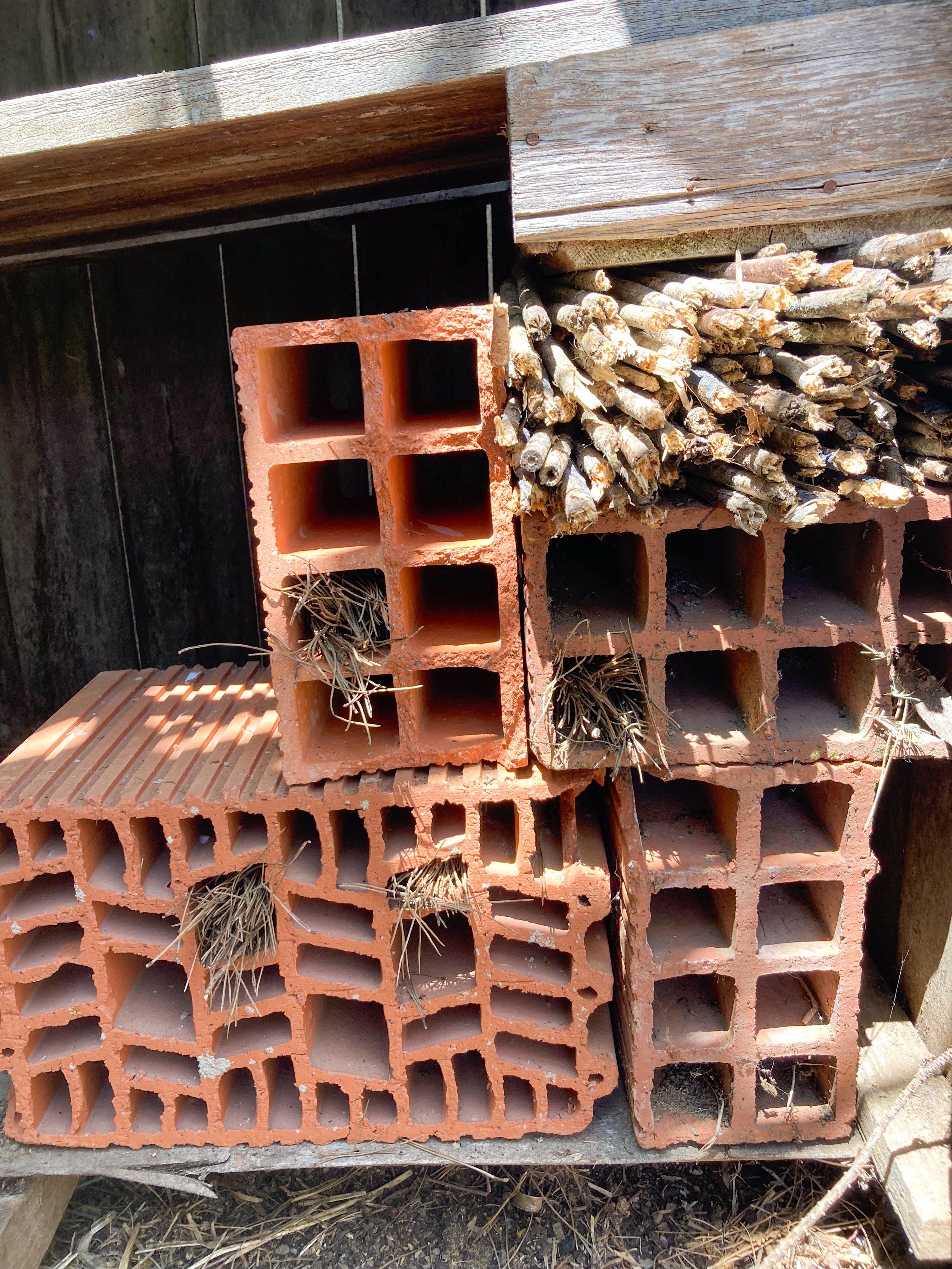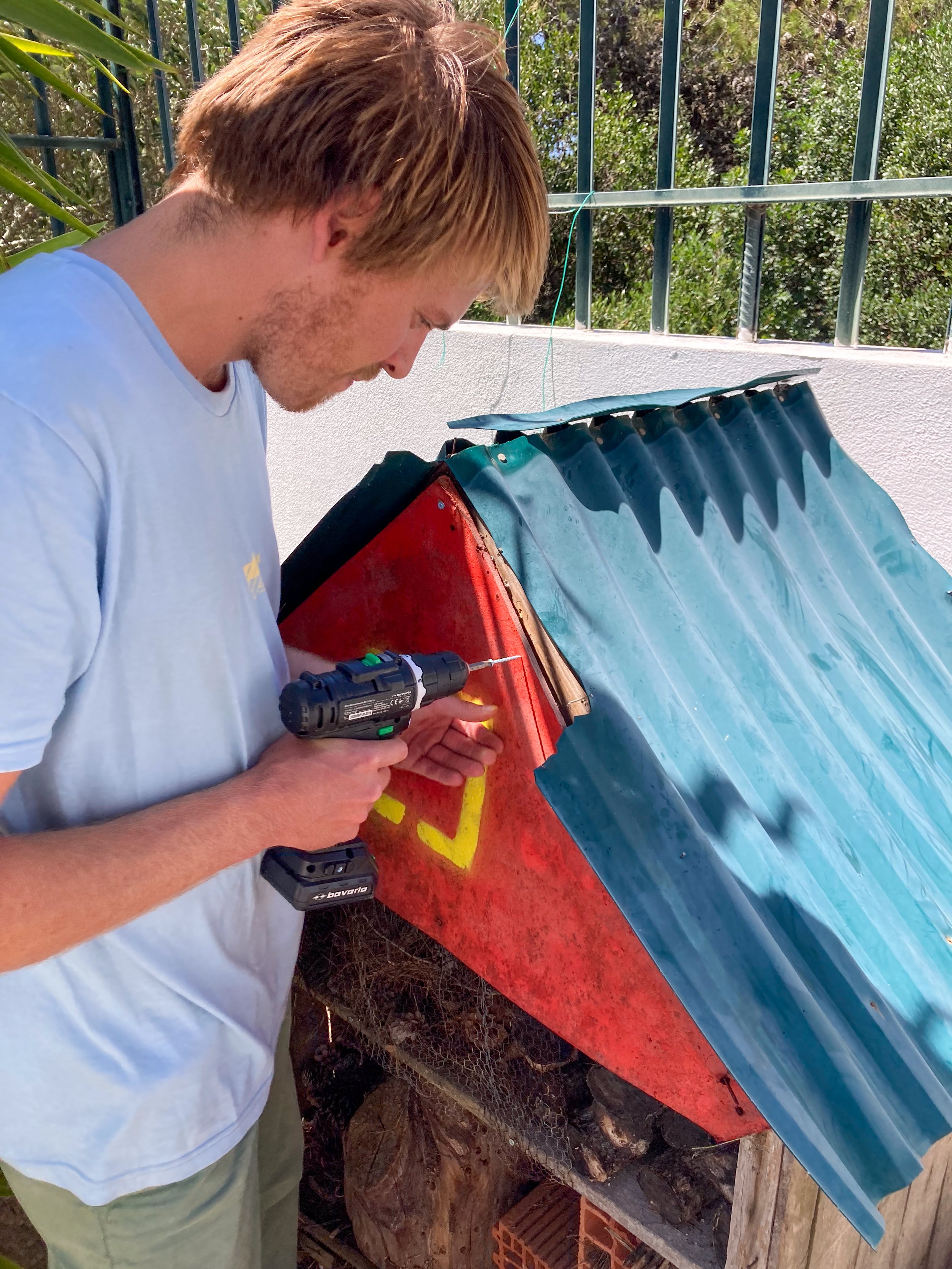Rewilding Europe is a massive task, and large-scale efforts are undoubtedly the most effective. However, anyone venturing into rewilding soon realises that any action, no matter how small, is better than none. Small urban spaces, like gardens, play a crucial role in the success of rewilding. After all, what’s the use of large rewilded areas if we can’t connect habitats or bridge over human-dominated zones? Your garden, balcony, or local park can make a difference by becoming a bridge for wildlife travelling between rewilding areas. To support small-scale rewilding, Sylvester has started collecting interventions that turn your small space into a rewilding oasis, helping connect rewilding areas and species.
Let’s dive into the first intervention: building a bug hotel.

A bug hotel, also known as an insect or wildlife hotel, provides shelter and nesting spaces for beneficial insects and small creatures. It mimics the natural features these insects seek for nesting and hibernation in urban or cultivated environments. Bug hotels benefit your garden in various ways, providing shelter and nesting for insects, promoting natural pest control, supporting biodiversity, improving soil health, and protecting rare native insects. They also offer educational opportunities to understand the importance of insects in our ecosystem.
Reading about all the good stuff that comes with a bug hotel, we could not help ourselves but build one in our garden. So here is how it went.

The frame: The frame of a bug hotel is usually built from wood with larger subcompartments (see drawing), but in our case, we found an old hen house in the back of the garden and decided to recycle it into our bug hotel structure. It already had some subcompartments, which gave us some basic divisions.

Most materials to fill the compartments of the bug hotel were mainly readily available aroun our house. We filled one part of the hotel with some stone bricks that were leftover at a building site next door. We stuffed small twigs into some of the brick holes but left the majority free to be filled by whoever wants to move in. A huge log that we found next to the bread oven seemed perfect to put next to the bricks in the lower compartment. We drilled some holes in the log to create some more variety in spaces within the log. We filled the rest of the lower compartment with pine cones, branches, and leaves. For the upper right corner of the top compartment, we collected smaller logs that we loosely stacked on top of each other. On the left side of the top floor, we installed some wire netting behind which we stuffed the space with pinecones, small branches, and leaves.

Finally, we had some fun spraying the Sylvester logo on the wooden piece that seals off the top of the house to the roof. Renovations done, and the bug hotel is ready to host its first guests. We are already looking forward to who is moving in, and we’ll definitely keep you posted on the progress.
If we managed to inspire you to make your life a little wilder, go ahead and build your own bug hotel and send us a photo. We are curious about what new residences for insects are developing.












